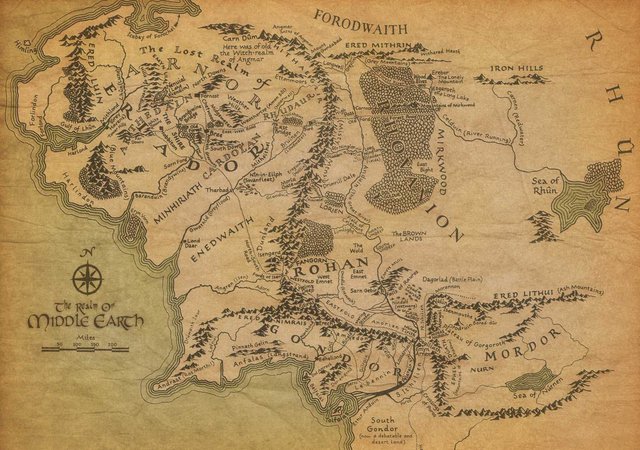Specialists from Lancaster University will develop a method for visualizing literary works based on text recognition algorithms, 3D animation and geoinformation systems.
The development of technologies for automatic text processing deals with a relatively new field of knowledge - digital humanities (digital humanities). For example, it assumes the visualization of literary works. So, earlier American literary scholars based on the computer analysis of English novels of the XVIII-XIX centuries made a map of the emotional perception of London. Their British colleagues also combined machine learning with geoinformation systems (GIS): this allowed us to trace the connection of the routes, which in the XVIII century the British moved along the Lake District, with a subjective assessment of the terrain.
There are also algorithms for visualizing text descriptions. An example of this is the WordsEye project, which is designed for three-dimensional modeling of verbal descriptions. The Lancaster University program aims to create software to automatically extract geolocation marks from text and build on them 3D images. According to scientists, the key difficulty of the task is the realistic reconstruction of fictional territories. The Research Council for Arts and Humanities (AHRC) of Great Britain allocated 914 thousand pounds sterling for the realization of the plan. The work is scheduled to be completed within three years.
According to the schedule, in the first year the authors intend to process an array of texts: at this stage the computer algorithm will train extracting descriptive elements suitable for visualization and convert them into XML format. During the second year of operation, the system will learn to compress texts to the XML description of individual territories and compose a visual reference book of landscapes through 3D modeling techniques. In the last year, the program will master the visual reproduction of certain scenes - this will involve software for game engines. Other technical details of the project are not disclosed.
The result of the program, according to a press release, will be a site with a large database of maps. In particular, it will include the models of Middle-earth from the legendary John Tolkien and the county of Barsetshire from the "Bartsenshire Chronicles" Anthony Trollop. It is expected that technology can make a significant contribution to education. At the same time, scientists do not expect to present an alternative to traditional books - three-dimensional projections will act as a supplement to the text descriptions that help visualization. In addition to modeling, recognition algorithms are used for other tasks. So, in 2016, Canadian programmers showed a system that allows you to search for answers in unfamiliar texts.
The development of a new method is reported on the website of Lancaster University.

In 2014, American students created a book that conveys the physical reactions of the characters to the reader.
Nice Post.
Also please check the below post if you like it please resteem it:
https://steemit.com/site/@vallurivikram/breaking-news-first-steem-accepting-onlie-shopping-portal-launching-july-9th-www-steemmart-site
Downvoting a post can decrease pending rewards and make it less visible. Common reasons:
Submit
Not gonna lie, fangasming over here!!!
Downvoting a post can decrease pending rewards and make it less visible. Common reasons:
Submit